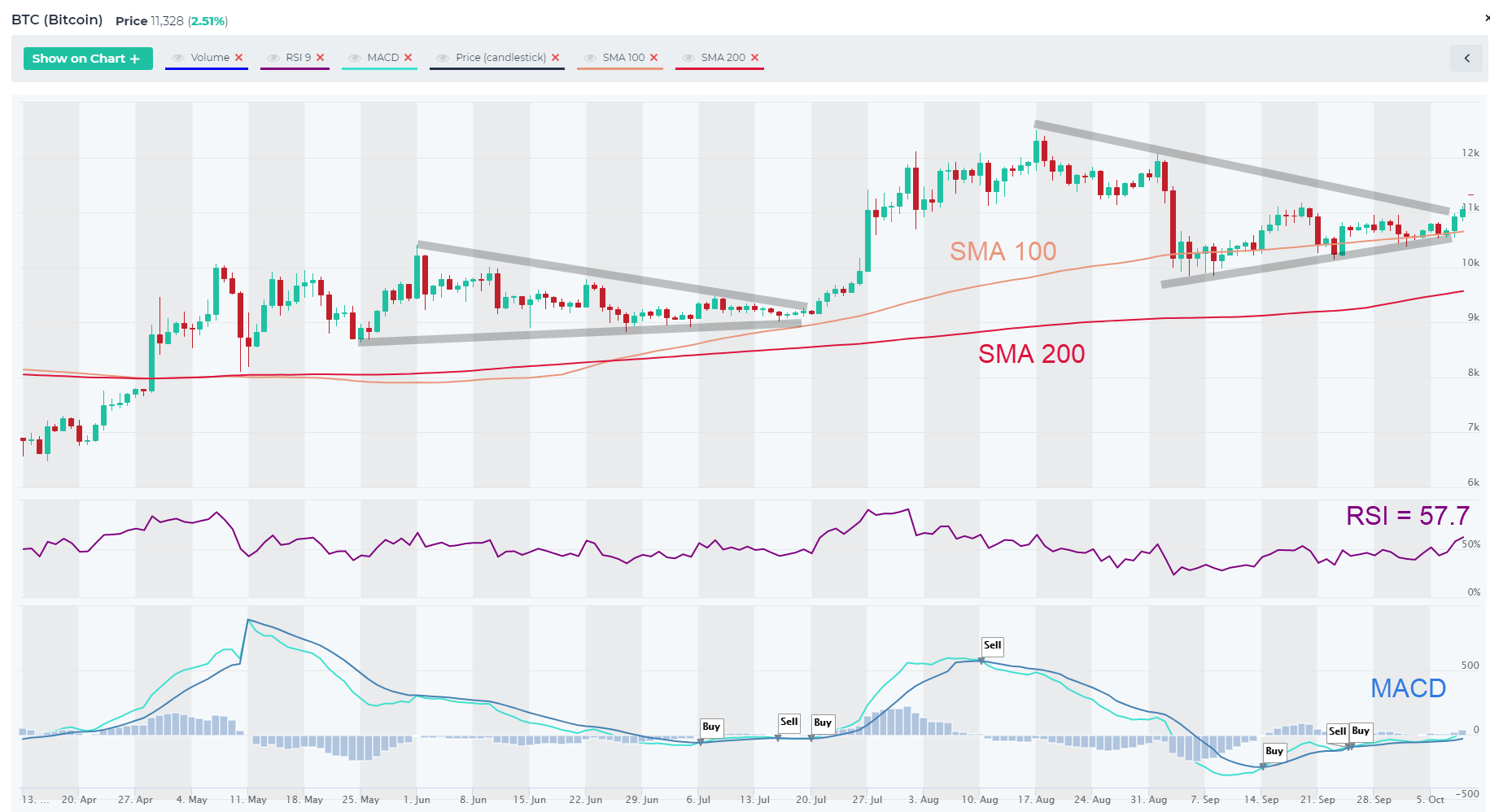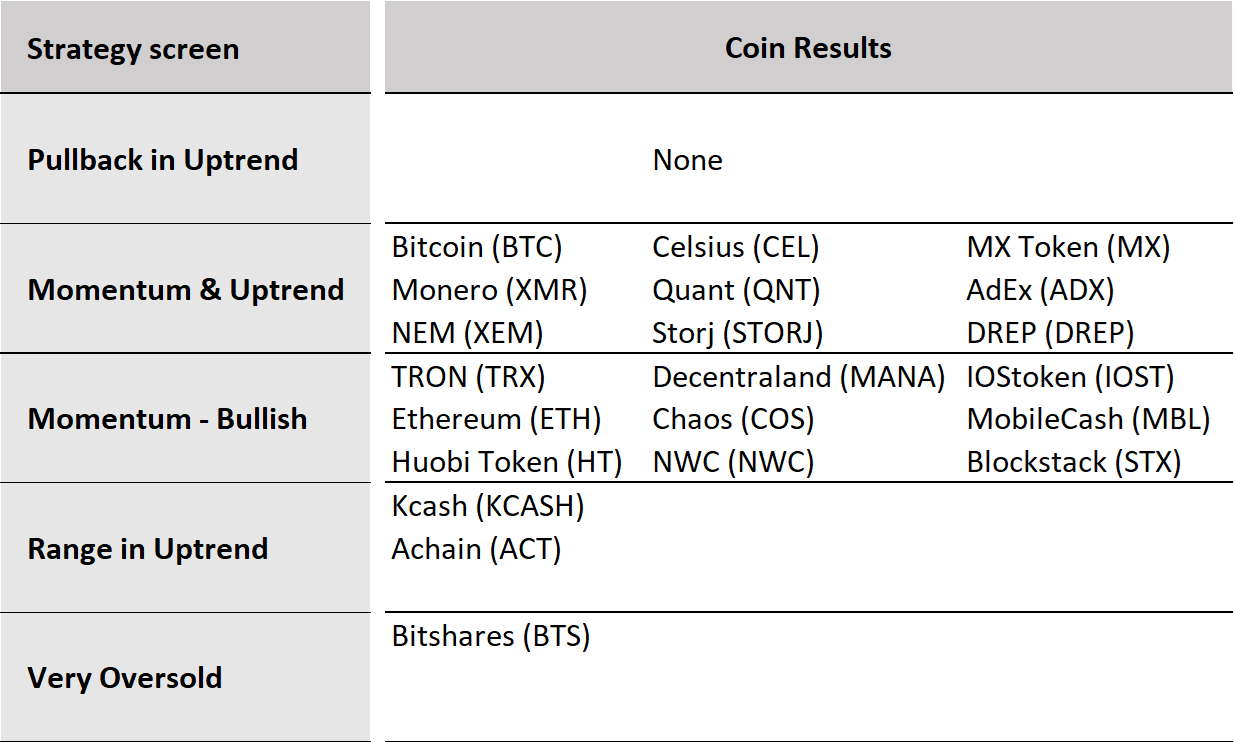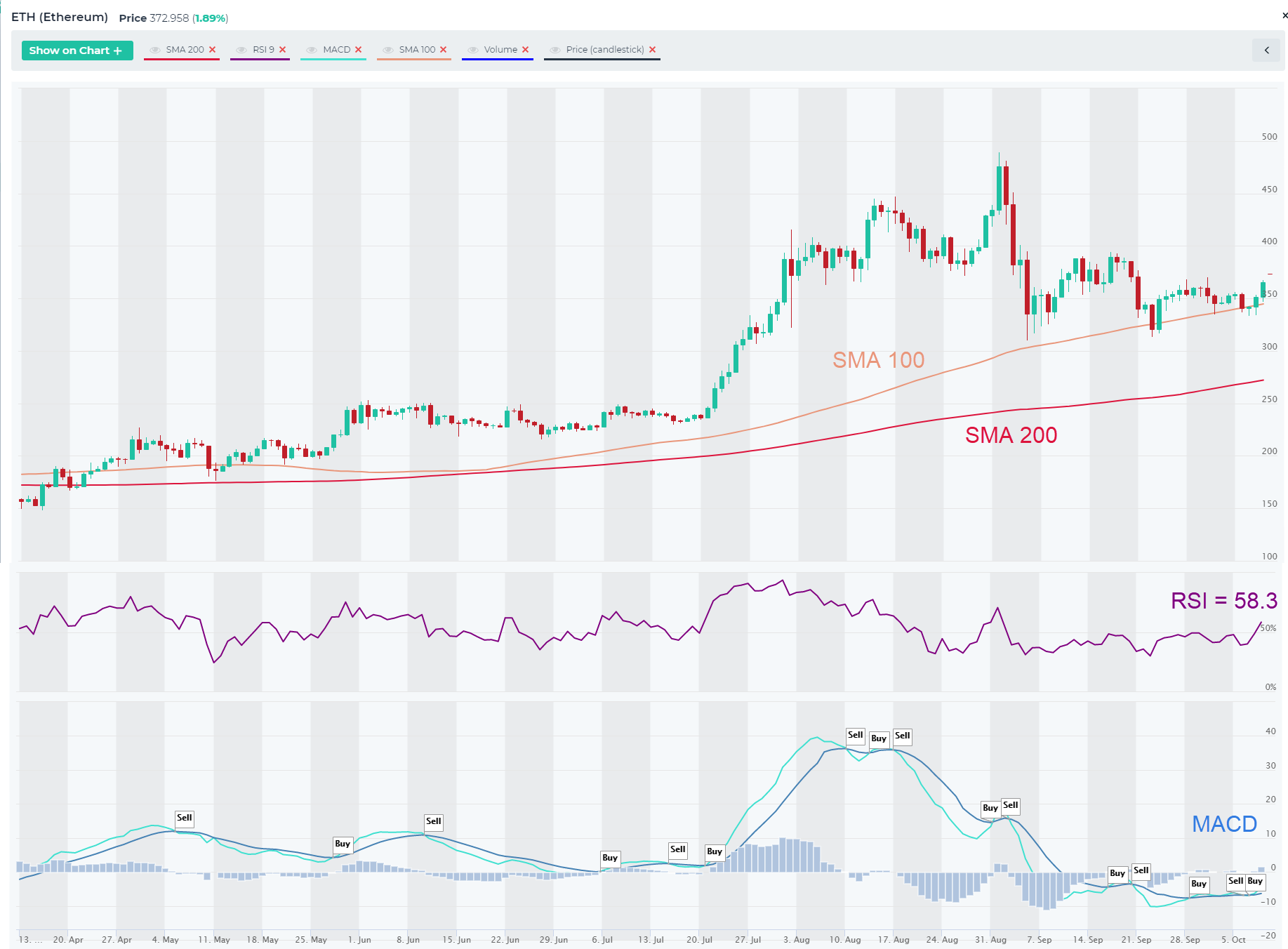New strategy screens yield solid gains (+2% to +26%); see new picks
We’re highlighting results for five popular strategy screens, and featuring new picks.
These screens are now accessible in our Signals Summary tab to all users. You can run these screens anytime (watch 3 min video) and create alerts to get notified with coins or pairs that match the screen criteria.
Our featured picks on Oct 6th from the five strategy screens have yielded solid gains:

Note: prices from Oct 6th are end of day closing prices and Oct 10th are intraday.
Below we highlight one specific setup for each strategy screen, but let’s start with Bitcoin (BTC), because it sets the tone for the entire market. After hitting a 28-month low in volatility, BTC appears to be breaking out of its $10K-11K range and out of a symmetrical triangle (see chart below).

Now onto the five strategy screens. Here are the highlights:

1. Pullback in Uptrend. This is a trend following strategy. Pullbacks can often provide opportunities to jump on an established trend. Today, this screen did not produce any results since all coins that are in an uptrend are also trading up. There are no pullbacks to pounce on. Patience is a virtue.
2. Momentum & Uptrend. This screen looks for coins in a long-term uptrend and a recent bullish momentum upswing.
XMR and CEL are downright beautiful in this category. Let’s review XMR. It bounced off its 100 day moving average and had bullish momentum signals (RSI and MACD crossovers).

3. Momentum – bullish. This screen looks for coins with bullish momentum, regardless of trend direction.
- Confirmation of a trend. If the momentum signals are bullish and the general uptrend is Up, then this can serve as a confirmation.
- Reversal indication. If the momentum signals are bullish but the general trend has been Down, then this could signal a trend reversal (from Down to Up in this case). Vice versa, if the coin has been in an UpTrend, but momentum signals turn bearish, this could indicate a correction / pullback or a trend reversal.
ETH (Ethereum) has received such momentum upswing recently, after bouncing off of its 100 day moving average (and support level). It could be a beginning of an uptrend resumption. ETH shined in August during the DeFi and yield-farming boom, but that cooled off in September. However, another fundamental catalyst could be in the wings in the near term: launch of Ethereum 2.0 (ETH 2.0). Here’s an article on that event.

4. Range in Uptrend. Range-bound trading is a trading strategy that seeks to identify and capitalize on coins trading in price channels.
After finding major support and resistance levels and connecting them with horizontal trendlines (zones), traders can buy when the price approaches support and sell when it reaches resistance. Technical indicators, such as the relative strength index (RSI), stochastic oscillator, and the commodity channel index (CCI), can be used to confirm overbought and oversold conditions when price oscillates within a trading range.
ACT (Achain) fits the bill. It’s sitting on its 200 day moving average and Support, and is relatively oversold based on RSI and CCI indicators.

5. Very Oversold. With most altcoins still in a short term Down Trend, we took a look at some extremely oversold situations that could be ripe for a bounce as sellers get exhausted and value hunters step in. This type of situation ain’t for the faint of heart and is clearly intended for swing traders, not trend followers, because this is clearly in an ugly Down Trend. And trading against the Trend is risky.
One such situation is BTS (Bitshares), which is very oversold on all three oscillator indicators (RSI = 27.1, STOCH = 16.5, CCI = -109). RSI and STOCH readings below 30 are very oversold, and below 20 extremely oversold. Similarly, CCI readings under -100 are very oversold. On the caution side, the price has broken all long-term moving averages and supports that would normally lend this situation more conviction.

Risk management – Stop Loss and trade size. In all of these setups, traders should use Stop Loss orders to manage their downside risk, in case the trade goes against us, as it often will. Trading is about probabilities and even though these setups have a high win rate, one must be prepared to minimize losses on the trades that go bust. If Stop Loss order types are not supported by they exchange, at least set up a price alert (see video). Also, trade size should be such that you never risk losing more than 2% of your total equity. Keeping the trade size small allows the trader to setup a wider Stop Loss, which gives the trade more room and time to complete with success. Setting Stop Loss levels too tight can often result in getting knocked out of a trade prematurely.
Disclaimer: This content is for informational purposes only, you should not construe any such information or other material as investment, financial, or other advice. There are risks associated with investing in cryptocurrencies. Loss of principal is possible.